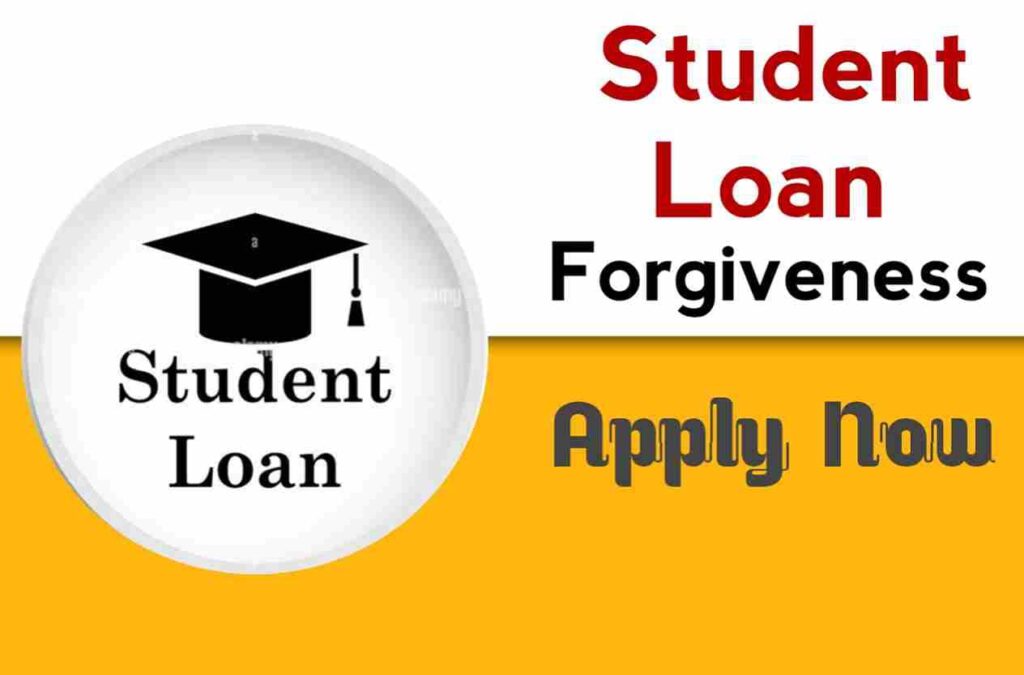One of the largest financial difficulties a person may experience is student loan debt, particularly in the US. Many students use student loans to finance their education due to the escalating cost of college tuition and the limited number of financial assistance choices. Fortunately, there are student debt forgiveness programmes available to help qualifying students lessen some of their financial responsibilities.
The purpose of this page is to explain what student debt forgiveness is, the many types of forgiveness programmes that are offered, and how to be eligible for them.
What is Forgiveness of Student Loans?
A programme called student debt forgiveness aims to eliminate or significantly lower a borrower’s outstanding student loan balance. As a result, qualifying borrowers won’t be required to return any, all, or any portion of their student loans.
There are several programmes that cancel student loans, including ones for individuals who work in the public sector like teachers, nurses, and military personnel. Additionally, some programmes grant forgiveness to debtors who are struggling financially or who have impairments.
Different Student Loan Forgiveness Initiatives
- Loan Forgiveness in the Public Interest (PSLF):
Graduates are encouraged to work in public service positions thanks to the Public Service Loan Forgiveness programme. After completing 120 required payments, eligible borrowers with jobs in the public sector or nonprofits may have their outstanding student loan amount cancelled. While working full-time in a qualified employment, the payments must be made under a qualifying repayment plan. - Loan forgiveness for teachersTeachers who work for educational service organisations or low-income schools are eligible for the Teacher Loan Forgiveness programme. After working as a teacher for five years straight, eligible teachers can have up to $17,500 of their Direct or FFEL Subsidised and Unsubsidized Loans cancelled.
- Loan Repayment Programme for Nurse Corps
Working in underprivileged communities is made easier for nurses thanks to the Nurse Corps Loan Repayment Programme. In return for working in an institution with a critical shortage of nurses, qualified nurses can have up to 85% of their outstanding student loan debt for nursing education forgiven. - Loan Forgiveness for Military Personnel
Military members have access to a number of student loan forgiveness programmes. For instance, after three years of service, the Army’s school Loan Repayment Programme would pay back up to $65,000 of a borrower’s school debts. After serving for three years, the Navy’s college Loan Repayment Programme will pay back up to $65,000 of a borrower’s college debts. - Loan from Perkins Cancelled
Borrowers in specific professions who have outstanding Perkins Loans may be eligible for cancellation. After five years of employment in a qualified position, eligible borrowers can have up to 100% of the remaining debt on their Perkins Loan erased. - Plans for Repayment Based on Income
Plans for income-driven repayment assist borrowers who are struggling financially. Based on the borrower’s income and family size, these options modify the monthly payment. Any outstanding amount may be forgiven after making payments for a predetermined period of years.
How to Meet Programme Requirements for Student Loan Forgiveness
Depending on the programme, different individuals may qualify for student loan forgiveness programmes. However, a few typical demands are as follows:
Working in a job that qualifies: A lot of student loan forgiveness plans demand that applicants work in industries like healthcare, education, or public service.
Meeting payment requirements: Prior to becoming eligible for forgiveness under some programmes, debtors must make a set amount of payments.
Applying for forgiveness: Lenders must submit applications for forgiveness online or through their loan servicer.
It’s crucial to remember that not every borrower will qualify for student loan forgiveness schemes. The type of loan, the repayment schedule, and the borrower’s financial status can all affect eligibility.
Final Reflections
Programmes for forgiving student loans can offer borrowers who are drowning in debt with much-needed respite. However, before enrolling in these programmes, it’s crucial to be aware of their prerequisites and restrictions. Additionally, borrowers need to be on the lookout for frauds that promise loan forgiveness but want upfront payments or private information.
Conclusion
Other methods for managing student loan debt are available in addition to student loan forgiveness programmes. Making monthly payments more affordable can be accomplished through tactics including income-driven repayment programmes, loan consolidation, and refinancing.
Even while these choices might not guarantee forgiveness, they might nonetheless offer debt-stricken debtors some respite. Before requesting loan forgiveness, it’s crucial to thoroughly weigh all of your alternatives and get advice from reliable sources to make the best choice possible for your financial position.
